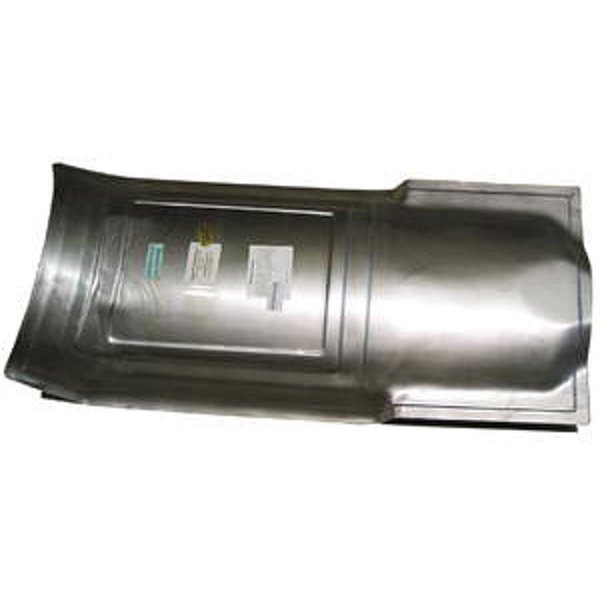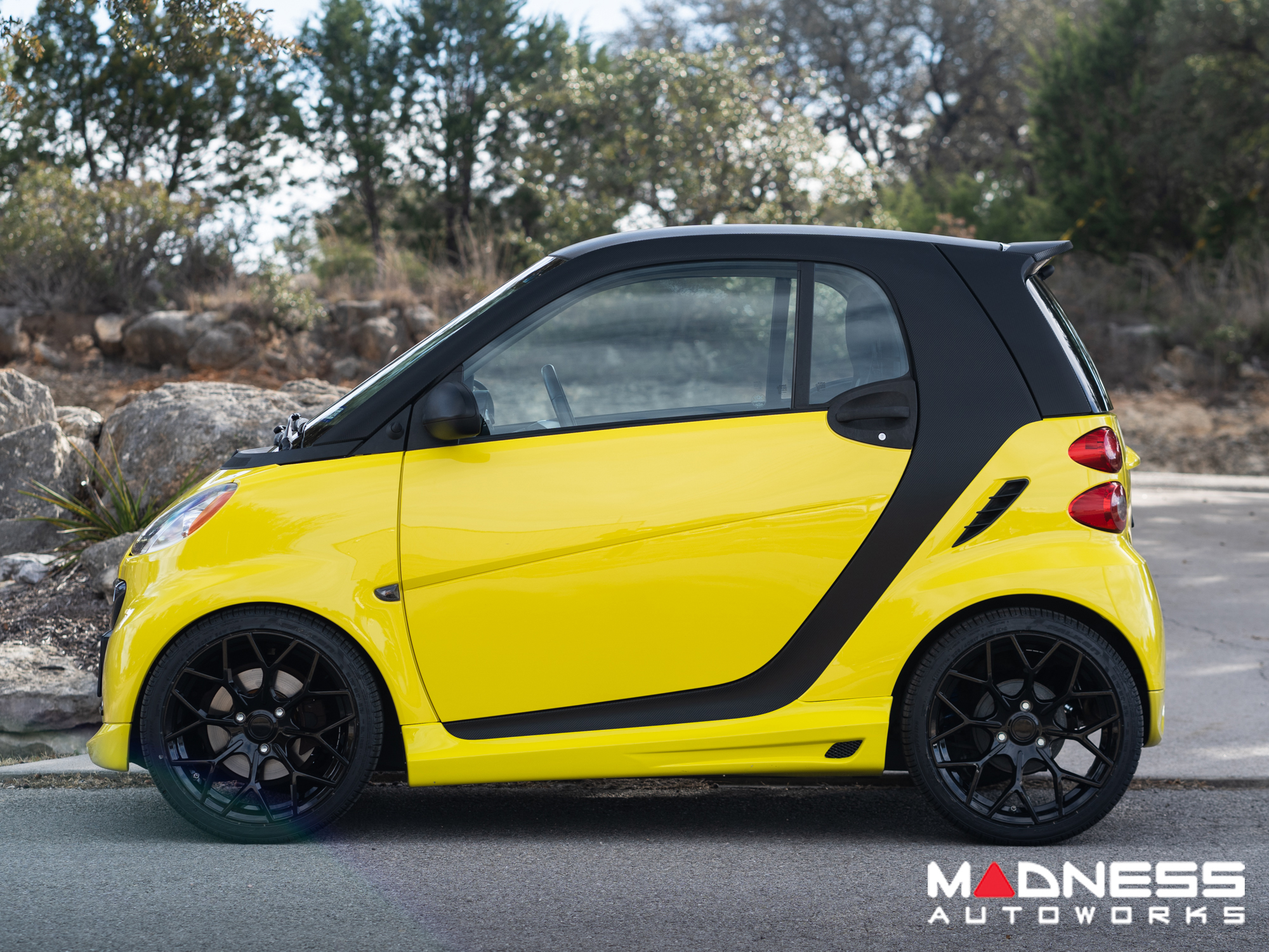The Ultimate Guide to Chevy Truck Replacement Body Panels: Restoring Your Ride to Glory
Introduction:
Replacement Body Panels For Chevy Trucks
Chevy trucks are renowned for their durability and ruggedness. They are built to last. However, even the toughest trucks can succumb to the ravages of time, accidents, or the elements. Rust, dents, and collision damage can leave your beloved Chevy looking worse for wear. Fortunately, replacement body panels offer a solution, allowing you to restore your truck to its former glory without breaking the bank.
This comprehensive guide dives deep into the world of Chevy truck replacement body panels. We'll cover everything from identifying the right panels to choosing the best materials and installation techniques. Whether you're a seasoned gearhead or a DIY enthusiast, this article will equip you with the knowledge to tackle your next restoration project with confidence.
Why Choose Replacement Body Panels?
Before we delve into the specifics, let's address the fundamental question: why opt for replacement body panels in the first place? Several compelling reasons make this a smart choice for Chevy truck owners.
- Cost-Effectiveness: Replacing an entire truck due to cosmetic damage is rarely practical. Replacement panels offer a much more affordable alternative, allowing you to repair specific areas without a complete overhaul.
- Preserving Value: A well-maintained truck holds its value better. Restoring damaged body panels can significantly increase your truck's resale value, making it a worthwhile investment.
- Maintaining Originality: For classic Chevy trucks, preserving originality is paramount. Replacement panels allow you to maintain the truck's original appearance while addressing structural issues.
- Customization Opportunities: Replacement panels aren't just for restoration. They also provide a blank canvas for customization. You can modify panels to create a unique look that reflects your personal style.
- Safety: Damaged body panels can compromise the structural integrity of your truck, potentially affecting safety in an accident. Replacing damaged panels ensures your truck meets safety standards.

Identifying the Right Replacement Body Panels for Your Chevy Truck
The first step in any restoration project is identifying the specific replacement body panels you need. This requires careful assessment of the damage and a clear understanding of your truck's make and model.

- Accurate Identification: Ensure you know the exact year, make, and model of your Chevy truck. This information is crucial for ordering the correct panels.
- Assess the Damage: Thoroughly inspect the damaged areas. Identify the specific panels that need replacement, such as fenders, doors, bedsides, or quarter panels.
- Check Part Numbers: If possible, locate the original part numbers for the panels you need. This will ensure a perfect fit and compatibility.
- Consider the Material: Replacement panels are typically made from steel, aluminum, or fiberglass. Choose a material that matches the original panel or meets your specific needs.

Based on my experience, it is important to double-check the compatibility of the replacement panel before purchasing. A small difference in the model year can result in a panel that doesn't fit properly.
Types of Chevy Truck Replacement Body Panels
The market offers a wide variety of replacement body panels for Chevy trucks. Understanding the different types available will help you make informed decisions.
- Fenders: Front fenders protect the wheels and engine compartment. Rear fenders (or quarter panels) cover the rear wheels and provide structural support.
- Doors: Doors provide access to the truck's interior. Replacement doors are available as complete assemblies or as individual components.
- Bedsides: Bedsides form the sides of the truck bed. They are prone to damage from cargo and accidents.
- Tailgates: The tailgate provides access to the truck bed. Replacement tailgates are available in various styles and materials.
- Hoods: The hood covers the engine compartment. Replacement hoods can improve the truck's appearance and aerodynamics.
- Floor Pans: Floor pans provide the foundation for the truck's interior. They are susceptible to rust and corrosion.
- Rocker Panels: Rocker panels are located below the doors. They provide structural support and protect the truck from road debris.
- Cab Corners: Cab corners are the lower rear corners of the cab. They are prone to rust and damage from accidents.
Choosing the Right Material: Steel, Aluminum, or Fiberglass?
The material of your replacement body panels plays a significant role in their durability, weight, and cost. The three most common materials are steel, aluminum, and fiberglass.
- Steel: Steel is the most common material for replacement body panels. It is strong, durable, and relatively inexpensive. Steel panels are a good choice for most restoration projects.
- Aluminum: Aluminum is lighter than steel and offers excellent corrosion resistance. Aluminum panels are more expensive than steel but can improve fuel efficiency and performance.
- Fiberglass: Fiberglass is a lightweight and versatile material. Fiberglass panels are often used for custom applications and offer excellent design flexibility. However, they are less durable than steel or aluminum.
Pro tips from us: When choosing a material, consider your budget, the intended use of your truck, and the overall aesthetic you're trying to achieve.
Where to Buy Chevy Truck Replacement Body Panels
Finding reliable suppliers of replacement body panels is crucial for a successful restoration project. Here are some options to consider:
- Local Auto Parts Stores: Local auto parts stores offer a convenient way to purchase replacement panels. You can physically inspect the panels before buying and get advice from experienced staff.
- Online Retailers: Online retailers offer a vast selection of replacement panels at competitive prices. Be sure to choose reputable retailers with good customer reviews.
- Specialty Restoration Shops: Specialty restoration shops specialize in classic car and truck restoration. They often carry high-quality replacement panels and can provide expert advice.
- Salvage Yards: Salvage yards are a good source for used replacement panels. You can often find original panels in good condition at a fraction of the cost of new panels.
Installation Techniques: DIY vs. Professional Installation
Once you've acquired your replacement body panels, the next step is installation. You have two options: DIY installation or professional installation.
- DIY Installation: DIY installation can save you money, but it requires technical skills, tools, and patience. Be sure to research the installation process thoroughly before you begin.
- Professional Installation: Professional installation ensures a high-quality finish and guarantees the panels are properly installed. However, it can be more expensive than DIY installation.
Steps for DIY Installation of Chevy Truck Replacement Body Panels:
If you choose to tackle the installation yourself, here's a general overview of the steps involved:
- Preparation: Gather the necessary tools and materials, including wrenches, sockets, screwdrivers, a grinder, a welder (if necessary), and safety equipment.
- Removal: Carefully remove the damaged body panel. Take photos of the original panel's location and mounting points for reference.
- Test Fitting: Test fit the replacement panel to ensure it aligns properly with the surrounding body panels. Make any necessary adjustments.
- Welding (if necessary): If the replacement panel requires welding, use a MIG welder to attach it to the truck's frame or body.
- Bodywork: Fill any gaps or imperfections with body filler. Sand the filler smooth to create a seamless transition.
- Priming: Apply a coat of primer to the replacement panel to protect it from rust and corrosion.
- Painting: Paint the replacement panel to match the truck's original color. Apply multiple coats of paint for a durable finish.
- Reassembly: Reassemble any components that were removed during the installation process.
Common Mistakes to Avoid During Installation:
- Rushing the Process: Take your time and pay attention to detail. Rushing the installation can lead to mistakes and a poor finish.
- Ignoring Safety Precautions: Wear safety glasses, gloves, and a respirator when working with power tools and chemicals.
- Improper Welding: If you're not experienced with welding, consider hiring a professional welder. Poor welding can compromise the structural integrity of the panel.
- Skipping Bodywork: Proper bodywork is essential for a seamless finish. Don't skip this step.
- Using the Wrong Paint: Use a high-quality automotive paint that matches the truck's original color.
Maintaining Your Restored Chevy Truck Body Panels
Once you've restored your Chevy truck's body panels, proper maintenance is essential to keep them looking their best.
- Regular Washing: Wash your truck regularly to remove dirt, grime, and road salt.
- Waxing: Apply a coat of wax to protect the paint from the elements.
- Rust Prevention: Inspect your truck regularly for signs of rust. Address any rust spots promptly to prevent them from spreading.
- Touch-Up Paint: Keep a bottle of touch-up paint on hand to repair minor scratches and chips.
- Garage Storage: If possible, store your truck in a garage to protect it from the elements.
Cost Considerations for Chevy Truck Replacement Body Panels
The cost of Chevy truck replacement body panels can vary depending on several factors, including the type of panel, the material, the brand, and the supplier.
- Panel Type: Larger panels, such as bedsides and quarter panels, tend to be more expensive than smaller panels, such as fender flares and trim pieces.
- Material: Aluminum and fiberglass panels are generally more expensive than steel panels.
- Brand: Aftermarket panels from reputable brands tend to be more expensive than generic panels.
- Supplier: Prices can vary significantly between different suppliers. Shop around to find the best deals.
- Installation Costs: Factor in the cost of professional installation if you're not planning to do the work yourself.
Conclusion:
Replacing body panels on your Chevy truck is a rewarding project that can restore its appearance, preserve its value, and ensure its safety. By carefully identifying the right panels, choosing the best materials, and following proper installation techniques, you can achieve professional-quality results. Whether you're a seasoned DIYer or prefer to leave it to the pros, this comprehensive guide has equipped you with the knowledge to tackle your next Chevy truck restoration project with confidence. Remember to prioritize safety, take your time, and enjoy the process of bringing your beloved truck back to its former glory.
External Link to a trusted auto parts supplier - example: Summit Racing
Further Reading:
Consider checking out [this article on our blog about maintaining your truck's paint](Internal Link to a related article on your blog) for more tips on keeping your Chevy looking its best. You might also find [this article on rust prevention](Internal Link to another related article on your blog) helpful.
Comments
Post a Comment